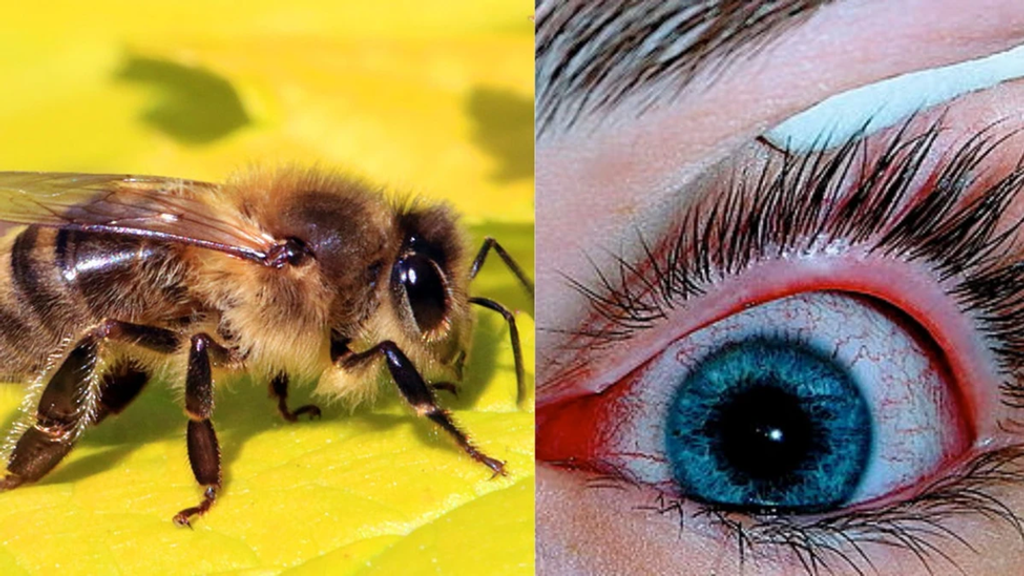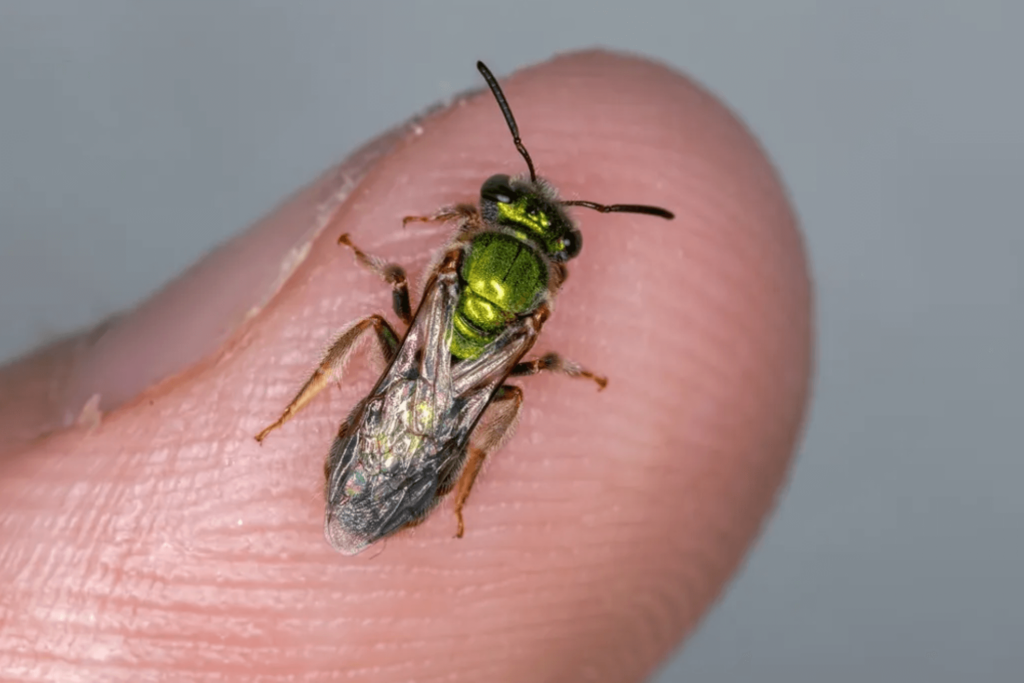A 29-year-old woman from Taiwan recounted feeling something enters her eye while removing weeds from a family grave. Believing it was dirt, she cleaned her eye with water. Despite her efforts, the rinse proved ineffective, and by nightfall, her eye had become swollen, with a sharp eye pain. Doctors found sweat bees feeding on her tears.
Shocking Revelation Behind the Eye Pain
“The pain was intense. Tears kept streaming from my eye,” shared the Taiwanese woman, identified solely by her family name, He. “I was scared to death.”
For the next three hours, the pain persisted, compelling her to seek medical attention at a hospital for an examination of her eye. Upon examination with a microscope, the ophthalmologist made a startling discovery, far beyond a typical eye infection – tiny legs of four live sweat bees were observed wriggling near her tear duct.
These bees were nourishing themselves by feeding on her tears.
A Rare Phenomenon: Sweat Bees Feeding on Tears
Dr. Hung Chi-ting, Head of the Ophthalmology Department at Fooyin University Hospital in Taiwan, characterized the incident as a “world first,” having effectively removed all four sweat bees alive from He’s tear duct.

“I observed something look like an insect’s legs, so I carefully extracted them one by one under a microscope, ensuring not to harm their bodies,” Dr. Hung Chi-ting stated during a press conference with CTS news.
The Nature of Sweat Bees and the Risk of Blindness
Sweat bees, usually sustained by nectar and pollen, derive their name from their affinity for salt in human sweat. They tend to be non-aggressive, stinging only when provoked. Dr. Hung noted that sweat bees are commonly found in mountainous regions or near graves, which clarifies how they entered the woman’s eye.
The woman received a diagnosis of cellulitis, a bacterial skin infection, along with severe corneal erosion attributed to the presence of sweat bees. Dr. Hung emphasized her good fortune in refraining from rubbing her eyes, as doing so could have squashed the bees and posed a risk of blindness to the eye.
The Unsettling Realization: The Fright of Bees
“Fortunately, she came to the hospital early. Otherwise, I might have had to consider removing her eyeball to prevent further complications,” Hung remarked. “Following the removal of the bees, she is expected to recover fully.”
Bees can be utterly terrifying. Something about them completely bypasses rational thought and triggers an immediate panic response in the brain, regardless of size. Now, with this story in mind, I realize their small size makes them even more frightening.
Disclaimer Statement: This information is from a third-party health news channel. The opinions expressed here belong to the respective authors/entities and do not reflect the views of Docquity. Docquity does not assure, endorse, or vouch for any of the content and bears no responsibility for it in any way. It is essential to take all necessary steps to ensure the information and content provided are accurate, current, and verified. Docquity disclaims any express or implied warranties related to the report and its contents.
Reference
- Woman’s Eye Hurts, Doctors Find Four Bees Feeding on Her Tears [Internet]. Accessed from Thrillist on April 03, 2024. Available at: https://www.thrillist.com/news/nation/doctors-find-bees-in-womans-eye
About Docquity
If you need more confidence and insights to boost careers in healthcare, expanding the network to other healthcare professionals to practice peer-to-peer learning might be the answer. One way to do it is by joining a social platform for healthcare professionals, such as Docquity.
Docquity is an AI-based state-of-the-art private & secure continual learning network of verified doctors, bringing you real-time knowledge from thousands of doctors worldwide. Today, Docquity has over 400,000 doctors spread across six countries in Asia. Meet experts and trusted peers across Asia where you can safely discuss clinical cases, get up-to-date insights from webinars and research journals, and earn CME/CPD credits through certified courses from Docquity Academy. All with the ease of a mobile app available on Android & iOS platforms!







